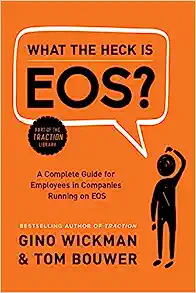Chapter 6 – Why Do We Have To Have Meetings? page 91.
- Meetings are not a waste of time.
- It’s what you do in meetings that is a waste of time.
- If all you do is talk endlessly without solving issues, then yes, you are wasting your time.
- The unfortunate reality is that your team can’t fully function at its best without productive meetings.
- Imagine a meeting where:
- It starts and ends on time.
- You contribute to solving the most important issue(s).
- Your entire team walks out committed to solving the issue(s) once and for all.
- That one meeting eliminates the need for other meetings that week.
End Procrastination
- Most human beings by nature procrastinate; they wait until the last minute to get things done.
- People delay acting until the last minute – until just before the next meeting.
- If you only meet once a month, you will only get one spike of activity per month.
- Therefore, to the degree you increase the meeting frequency, you create that spike of activity more often.
Weekly Meeting Pulse
- We recommend a weekly meeting pulse.
- That way you get a spike of activity 52 times per year (as opposed to 12 times with monthly meetings).
- We’ve found the best interval and length of meeting pulse for most teams is a 90-minute meeting every week.
- These weekly meetings:
- Are on the same day at the same time.
- Have the same agenda.
- Start on time, End on time.
- This type of meeting is called a Level 10 Meeting or “L10” for short.
Level 10 Meetings
- The L10 is designed to be a time management tool that saves you time by helping the right hand know what the left hand is doing – avoiding train wrecks and bottlenecks that slow things down.
- It also helps by ending interruptions during the week from issues that can be solved in the meeting.
- Two important things:
- During this meeting, you will be creating an Issues List:
- A place to put all unresolved issues that need to be discussed.
- These are any ideas, opportunities, problems, concerns, or barriers.
- You address these issues during the IDS (Identify, Discuss, and Solve) section of the agenda.
- The meeting must always:
- Take place on the same day at the same time each week.
- Start and end on time.
- During this meeting, you will be creating an Issues List:
- Level 10 Meeting Agenda
- Segue (5 min)
- Scorecard (5 min)
- Rock Review (5 min)
- Customer/Employee Headlines (5 min)
- To-Do List (5 min)
- IDS (60 min)
- Conclude (5 min)
- Link – YouTube Video on Running Effective L10s
Segue
- A chance for your team to transition from working “in the business” to “on the business.”
- Each person on the team shares one piece of both personal and professional good news from the past week.
- Allows team members to get to know one another and start the meeting off with a positive vibe.
Scorecard
- A chance to make sure your Measurables are on track for the goals you’ve set.
- You review each Measurable as a team and confirm if they are on track or off track.
- During the review of the Scorecard, there should be no questions, no color commentary, no excuses. Fight the urge to discuss anything.
- If a Measurable is off track or if anyone on the team has a question, it gets dropped down to the Issues List.
Rock Review
- Here you are making sure each team member’s Rocks are on track for the quarter.
- All Rock owners will take a turn simply saying “on track” or “off track.”
- During the Rock Review, there should be no questions, no color commentary, no excuses.
- If a Rock is off track or if anyone on the team has a question, it gets dropped down to the Issues List.
Customer/Employee Headlines
- The 5-minute section allows anyone to bring up good or bad news about customers, employees, or both.
- These should be quick, 1 to 2-sentence headlines. If anything is more than that, drop it down to the Issues List.
To-Dos
- These are the commitments you made to each other in your last L10 meeting.
- Usually, these are actions you agreed to complete based on how you decided to solve an issue.
- The team will review each To-Do to make sure they are “To-Done.”
- To-Dos are typically 7-day action items.
- The goal is to complete 90% of them each week.
IDS (Identify, Discuss, Solve)
- This is the meat of the L10 meeting; this is where the magic happens.
- Start by reviewing your Issues List, which you’ve been building during the first part of the meeting, as well as any issues that carried over from last week’s L10 Meeting.
- 3 Types of Issues on an Issues List:
- Decisions
- Information to Share
- Information Needed
- From the Issues List, pick the top 3 that need to be resolved this week.
- When issue number 1 is solved, move to number 2 and then to number 3. If you still have time left, pick the next 3 most important issues and repeat.
- The goal is to solve the most important issues well, not to solve all the issues.
- The goal is to solve an issue once and for all – so it never comes back.
IDS’ing
- The process you go through to solve an issue is called IDS’ing:
- Identify – Look beyond the symptom to the real issue underneath; find the root cause.
- Discuss – Everyone gives their input on the issue.
- Solve – Once all the views are on the table, you must move to solve.
- The reason most meetings are a waste of time is that teams spend all their time discussing an issue, never identifying the root cause, and as a result, never solving the issue.
Conclude
- With 5 minutes left in the meeting, stop whatever you are doing – even if you are in the middle of an issue.
- You still need to do 3 things and end the meeting on time:
- Recap the new To-Dos that came out of the meeting:
- Make sure everyone is clear on their To-dos.
- Make sure everyone is committed to their To-Dos.
- Decide if there are any Cascading Messages:
- Important messages to communicate to others inside or outside the company.
- Quickly decide who is going to communicate the message.
- Rate the meeting:
- Everyone rates the quality of the meeting on a scale of 1 to 10.
- Rate the meeting on the following criteria:
- Did it start and end on time?
- Did you follow the agenda?
- Is everyone on the Same Page?
- Did 90% or more of the To-Dos get done?
- Did you solve the most important issues?
- Rating the meeting will help the team improve
- If someone rates the meeting below an 8, ask, “What would have made the meeting a 10 for you?”
Questions to Ask Your Manager
- Will I be punished for bringing up any issues in the L10?
- Will you get mad if I give the meeting a low score?
- Can we watch the L10 Video and discuss how we can improve our L10?



